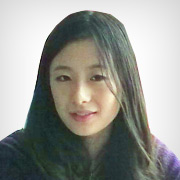If Cowboy is able to do this, he will have learned how to add.
Questions 26 to 28 are based on the passage you have just heard.
26. What does the color of the light stand for?
27. What does Dr. Findley plan to teach Cowboy?
28. What is the best title for this selection?
Passage Two
Most libraries are alike in certain basic ways. The major section of a library usually contains hundreds and hundreds of books called “Circulation Books.” These are books you can borrow for several weeks at a time. Brand-new books are often placed in a special section of a library and can be borrowed for only a few days. In yet another section, the Reference Section, books may not be borrowed at all, but must be used only in the library. Reference books are in great demand and this is why they can not be taken home. Libraries also have magazines and newspapers. These are called periodicals. Libraries also have newspaper clippings which are arranged alphabetically by subject in a vertical file. A librarian may have to help you to use the vertical file. Many libraries today have areas called “Media Resource Center.” In such centers you can find information in a wide variety of resource media. Besides books and periodicals, a Media Resource Center may have collections of records, films, micro film of old newspapers, slides, reproductions of art work, and sound and video tape recordings. The machines and equipment necessary for using these materials are usually right in the library, or may be in a nearby area.
Questions 29 to 31 are based on the passage you have just heard.
29. Which kind of books can not be taken out of the library?
30. What can you find in the vertical file?
31. What is available at the Media Resource Center?
Passage Three
A silver dollar is not worth a dollar — nor is any other silver coin really worth its face value. Silver coins are made of an alloy — a mixture of 10 per cent copper and 90 per cent silver — which lasts much longer in circulation than pure silver would. A silver dollar contains 90 cents worth of silver and a dime has 9 cents worth. It takes only a pennyworth of silver to make a nickel.
This was not the case in 1792, when the United States began minting coins of pure gold and silver. Citizens were welcome to stop in anytime with gold or silver in any form — cups, vases, or even gold fillings from their teeth — and have it melted down for spending money.
Today the mints in Philadelphia and Denver earn a yearly profit of about $ 40 million. Most of this comes from using alloys rather than pure silver in the production of the $ 22 billion worth of coins circulating in the United States. The Philadelphia plant also manufactures coins for foreign countries. In a recent year almost 180 million coins were made for the use of foreign governments.
Questions 32 to 35 are based on the passage you have just heard.
32. Why are silver coins today not worth face value?
33. What are U. S. silver coins made of?
34. What were the first U. S. coins made of?
35. What is an alloy used to do?
Section C
Directions: In this section, you will hear a passage three times. When the passage is read for the first time, you should listen carefully for its general idea. When the passage is read for the second time, you are required to fill in the blanks numbered from 36 to 43 with the exact words you have just heard. For blanks numbered from 44 to 46 you are required to fill in the missing information.
For these blanks, you can either use the exact words you have just heard or write down the main points in your own words. Finally, when the passage is read for the third time, you should check what you have written.
相关推荐:
英语周报:2008年12月四级听力模拟试题(七) 英语新四级听力改革分析及高分必知技巧 新东方:英语四六级听力考试十大热门问题解答














